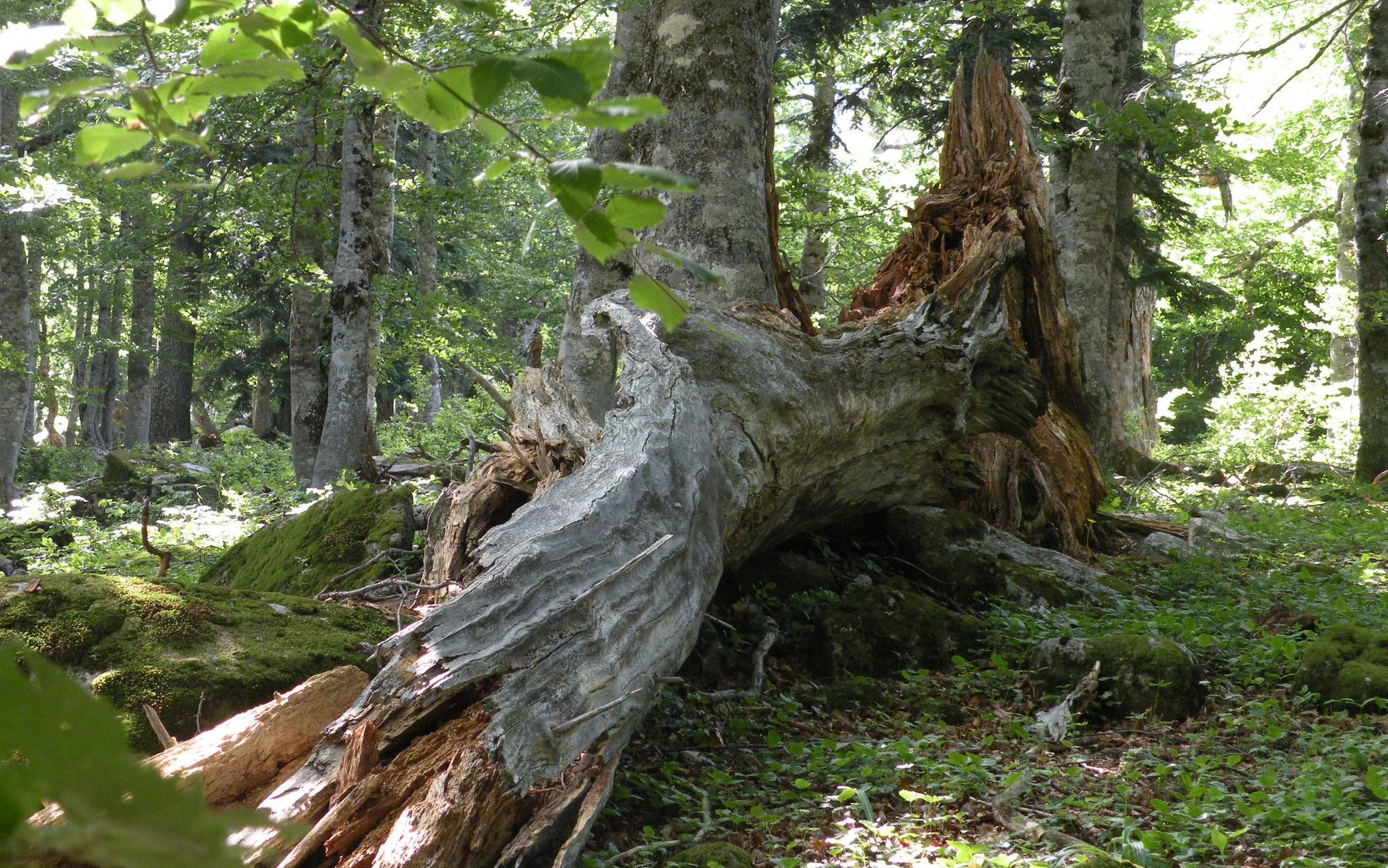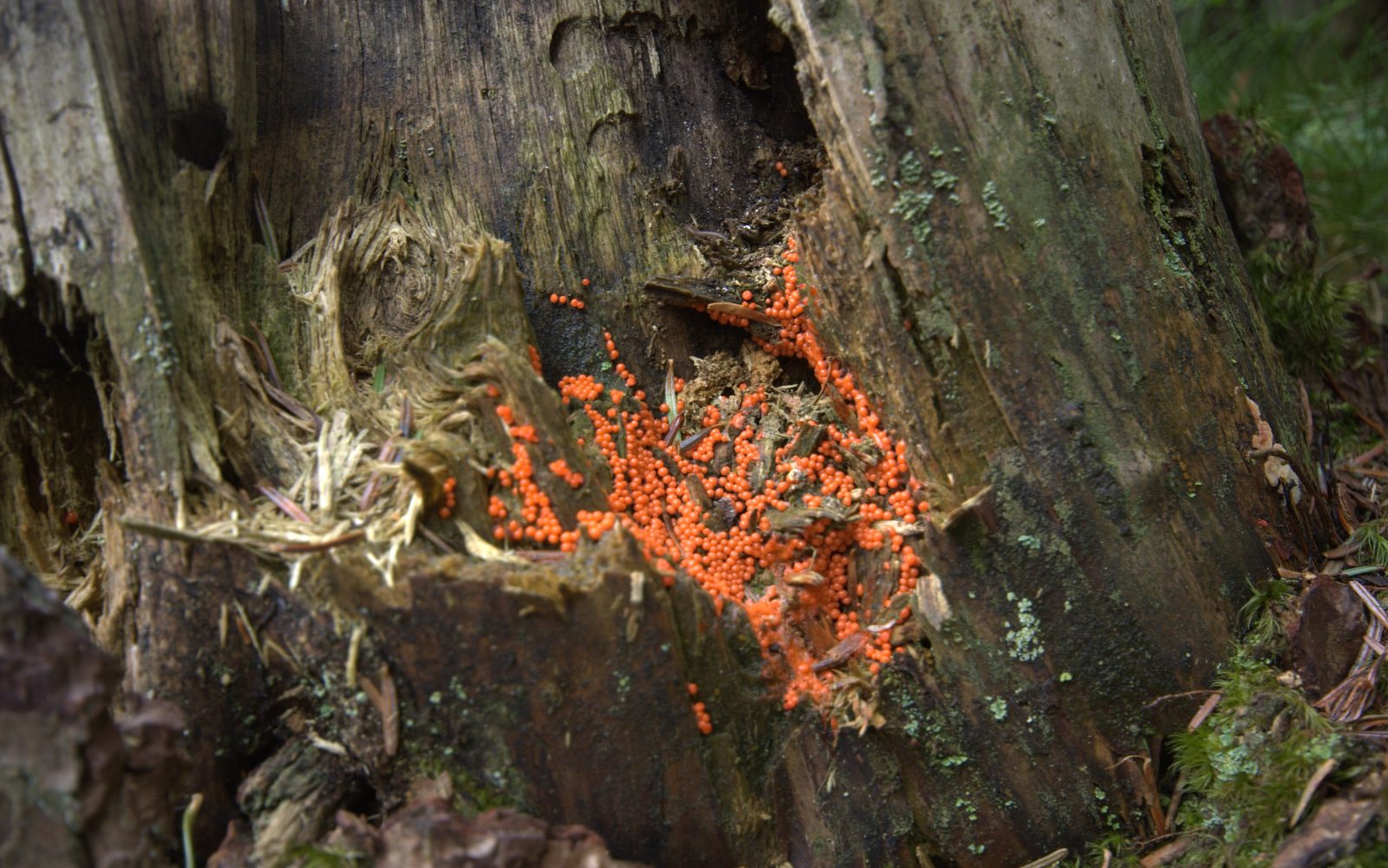Deadwood in forests contributes to biodiversity and should only be removed if it poses a fire hazard
Deadwood from trees in a forest is a haven for life, a source of refuge and food for fungi, insects, and other key animals. The benefits of deadwood are such that the European Union’s new Nature Restoration Law is seeking to monitor how much of it there is in forests and increase its amount to recover lost biodiversity. However, there are schools of thought that say it is a fire hazard and should be removed from forests as quickly as possible. So, what should we do with deadwood in forests? And what about the deadwood that increasingly frequent episodes of drought, infestations and strong winds could generate?
While large deadwood in European forests is an insignificant fire risk factor, it is of great value for conserving biodiversity.
The issue has caused BioAgora, a recently launched European project whose main partners include CREAF, to activate the new Science Service for Biodiversity , through which the scientific community can be asked to swiftly summarize all the existing knowledge on a matter to guide European policy-making. That has given rise to a synthesis report entitled “Deadwood and Fire Risk in Europe” , which concludes that while large deadwood in European forests is an insignificant fire risk factor, it is of great value for conserving biodiversity.. The document argues that although deadwood may be part of the burnable fuel available in the event of a forest fire, it has a low level of flammability and does not necessarily increase the risk of such a fire taking place. As far as Mediterranean ecosystems are concerned, the report states that there is very little deadwood of a substantial size in the region’s forests, for which reason it does not pose a significant fire hazard, and that it would actually be desirable to increase the amount of deadwood to improve biodiversity and forest health and resilience. According to the report, thicker logs can add to soil moisture and even slow the spread of surface fire.

“In the Mediterranean, when there is occasionally more deadwood in a forest because of a drought or an infestation, consideration should be given to removing smaller pieces, which are more flammable and act as fine fuel, but also to leaving behind some of the larger pieces, which are the most valuable from the perspective of biodiversity and the least problematic in terms of fire risk.”
Josep Maria Espelta, participant en l’informe i investigador del CREAF.
Produced with input from CREAF and the Centre de Ciència i Tecnologia Forestal de Catalunya (CTFC), among others, the report distinguishes between coarse deadwood, which has a low level of flammability, burns slowly and is vital to forest health, and fine deadwood, i.e. small branches and twigs that are of little relevance to biodiversity but could play a more important role in the ignition and spread of fires.

Recovering natural processes such as fire
Small, controlled fires would be an effective means of lessening the risk of major fires and would benefit biodiversity.
The report makes a number of recommendations adapted to different scenarios. In areas where the risk of fire is high, for example, it recommends specific forest management aimed at preventing the spread of wildfire or at recovering natural processes with the same effect, such as low-intensity fires. Small, controlled fires would be an effective means of lessening the risk of major fires and would benefit biodiversity. Minor fires reduce the fuel load, especially fine woody debris, and create breaks in areas of forest. Fire has an effect that provides a wide range of essential habitats for relatively long periods; it acts as a vaccine against large forest fires.

“The idea of fire aiding life might seem counterintuitive, but when a fire happens in non-extreme weather, soil moisture and fuel conditions, the coarsest deadwood is left undamaged, and it is actually good that some of it gets burned, as many organisms depend on burned deadwood.”
Lluís Brotons, investigador del CSIC al CREAF i també autor de l’informe.
CTFC researcher and report reviewer Eduard Planas remarks that a different scenario would involve large areas of forest being affected by disturbances (windstorms, infestations or wet snow), in which case, as an extraordinary measure, for health reasons, reasons related to public use, or with the aim of reducing the risk of fire, steps may have to be taken to deal with deadwood. deadwood.
A protector for Mediterranean forests
The Mediterranean region’s forest systems are nutrient-poor and suffer frequent droughts. Against that backdrop, there is broad scientific and technical consensus in favour of retaining some deadwood in forests, to keep them in good health and make them more resistant to climate change, firstly because deadwood is the habitat of many species, and secondly because it provides the soil with moisture, enabling numerous forms of life to flourish and reducing water loss through evaporation.

The small amount of large deadwood in Mediterranean forests means it is neither a significant fire risk factor nor of any great benefit in terms of conserving biodiversity.
Mediterranean forests are among the most prone to fire. At the same time, the region’s long history of intensive forestry has resulted in a dearth of large deadwood at present, meaning it is neither a significant fire risk factor nor of any great benefit in terms of conserving biodiversity. According to the report, the main fire risk factor in Mediterranean forests is the increase in their horizontal and vertical continuity, a consequence of reductions in levels of forest management and silvopasture over many years.
“The current situation of Mediterranean forest areas might change due to the growing frequency of episodes of infestations, droughts and storms, phenomena that could intermittently increase the presence of deadwood in forests,” says Josep Maria Espelta. “In such cases, the option of removing deadwood — especially the finest deadwood — should be weighed up,” he stresses.
Science-based decisions
The report has arisen from the convergence between the BioAgora project and the Knowledge Centre for Biodiversity (KCBD), which exists to further knowledge, facilitate sharing it, and foster dialogue for EU policy-making related to biodiversity. CREAF is both a partner in the BioAgora project and a joint coordinator, alongside the CTFC, of the Natural Heritage and Biodiversity Observatory (OPNB).As such, CREAF and the CTFC are firmly committed to participating in the advisory services currently being piloted at European level, with the aim of transferring the same way of working to Catalonia.

“This information, like other information being generated within the framework of the Natural Heritage and Biodiversity Observatory, should enable us to make the best decisions when planning and managing Catalonia’s forests, in such a way as to achieve compatibility between the Department’s different objectives: the protection and promotion of biodiversity, the sustainable use of resources, and the prevention of forest fires,” states Marc Vilahur, director general for the environment and environmental policies of the Government of Catalonia’s Ministry of Climate Action, Food and Rural Affairs."That is not a simple matter, but, with the best knowledge available and dialogue between the different actors, it can be done,” he adds.







